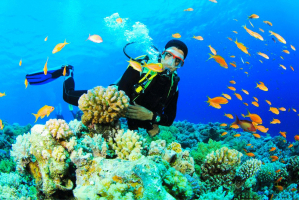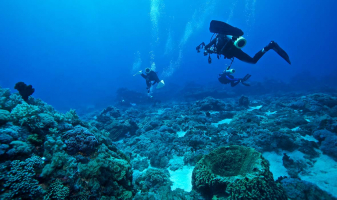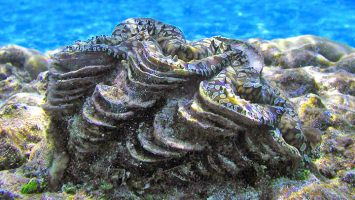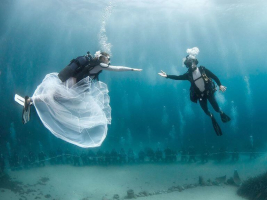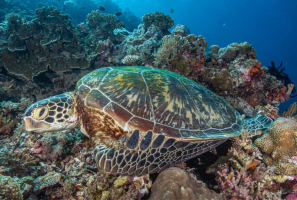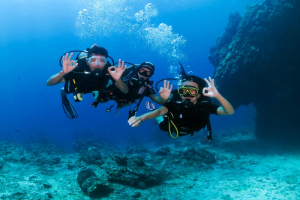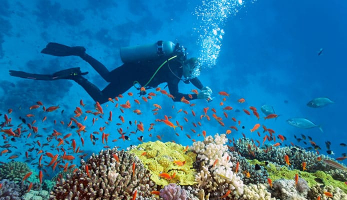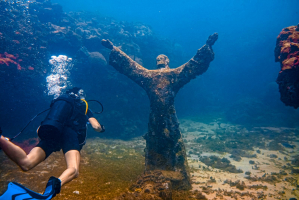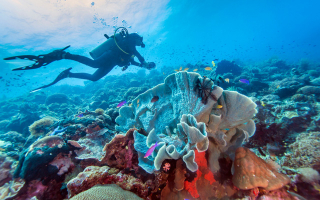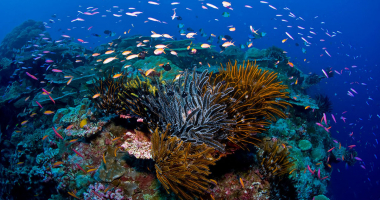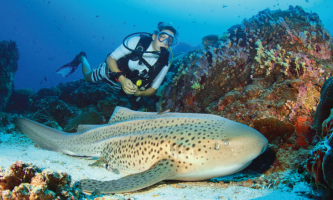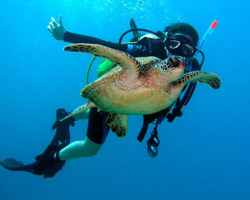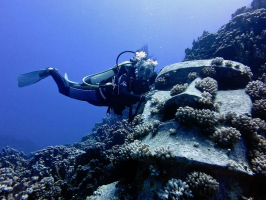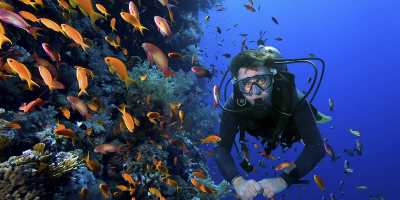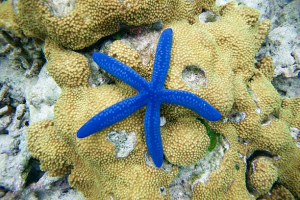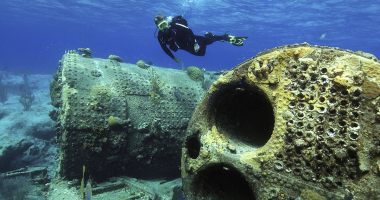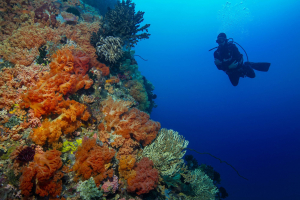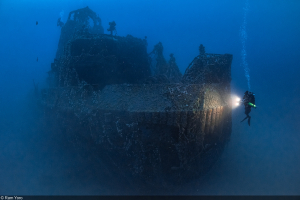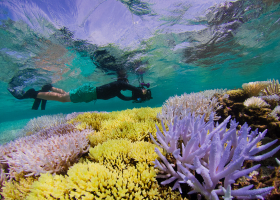Top 6 Best Dive Sites in Hongkong
Hong Kong's history has always been entwined with the sea that surrounds it, from its humble beginnings as a fishing village to its current status as one of ... read more...the world's busiest ports. Dive into Hong Kong's waterways and rediscover the sea, floating through the depths and marveling at schools of fish and interesting, unique species in a rainbow of colors. Here's a rundown of some of the best dive sites in Hongkong.
-
Ninepin Islands - one of the best dive site in Hongkong, which is known for its hexagonal vertical rhyolite columns, which were formed by a volcanic explosion about 140 million years ago near Sai Kung. The high tides that sweep over the islands every day have severely degraded the Ninepin Group. As a result of erosion, it has multiple marine caves. The Ninepin Group had been devoid of human presence for a long time.
On South Ninepin Island, however, there is a temple dedicated to Tin Hau for any fishermen who have landed on the island. The Ninepin Group is known for its hexagonal vertical rhyolite columns, which were formed by a volcanic explosion about 140 million years ago near Sai Kung. The high tides that sweep over the islands every day have severely degraded the Ninepin Group. As a result of erosion, it has multiple marine caves. The Ninepin Group had been devoid of human presence for a long time. On South Ninepin Island, however, there is a temple dedicated to Tin Hau for any fishermen who have landed on the island.
The floor of the coral protected region on the bay's inner is covered with clownfish-inhabited anemones, lionfish, pufferfish, and schools of darting damselfish. Some of Hong Kong's best soft coral gardens can be found in the deeper waters of the canal between the North and South Islands. Velvet fish, pegasus fish, and even the Rhinopias Scorpionfish have all been spotted in Ninepin. The greatest site to anchor is in South Ninepin Island's protected bay, which has a depth of 8 to 10 meters.
Location: Easternmost waters of Hong Kong
Depth: 10m
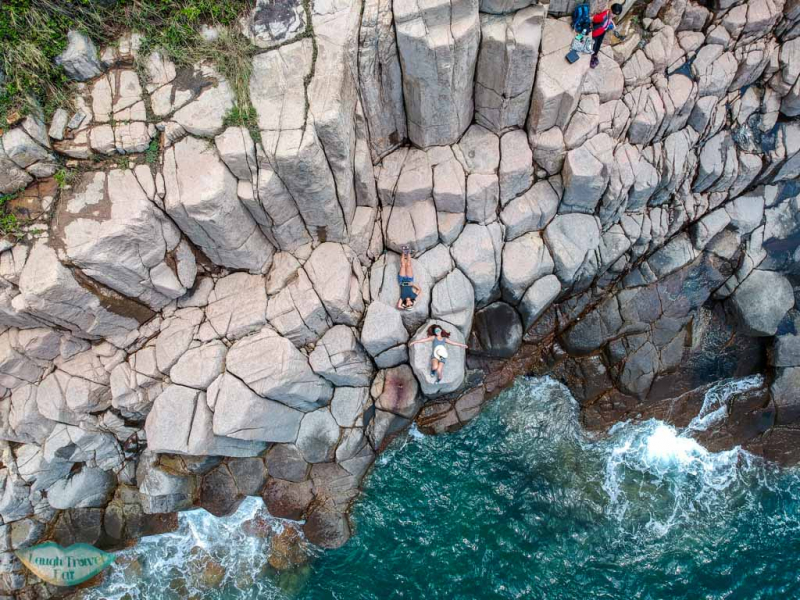
Phoot source: Laugh Travel Eat 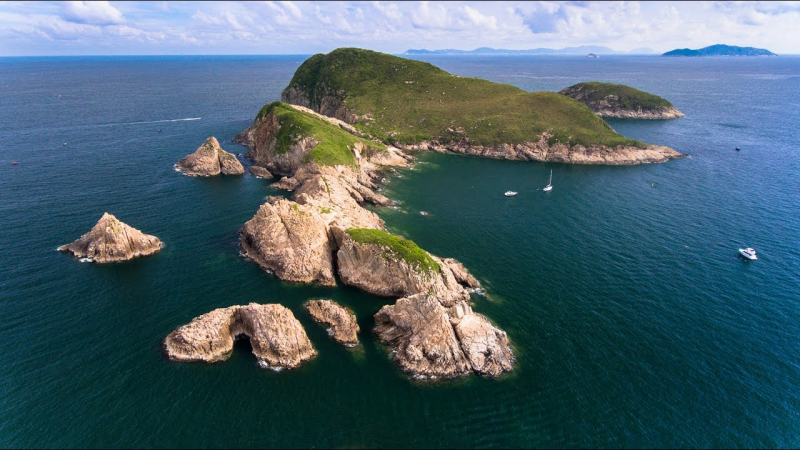
Photo source: HK outdoor Adventure -
There are some wonderful dive opportunities just ahead when visiting the "Mother of All Hong Kong Beaches," Tai Long Wan - one of the best dive sites in Hongkong. Underwater life in the Tsim Chau and Tai Chau Islands includes clown fish, moray eels, scorpion fish, and regular sightings of cuttlefish. There are also sightings of the rare green turtle in the spring. One of the few "caves" in Hong Kong, Tai Chau is notable for its diveable sea cave.
The vertical cave can be entered up to a depth of 20 meters. Because it is not a real cave, there is no immediate risk; divers can surface at any time throughout the dive. Because the sea cave is a wash-out caused by millennia of wave impacts, the only time you can dive it is when there is surge.
In addition, the islands have additional underwater caves and canyons. On calm days, you can anchor south of the islands, facing the cave, for better diving, although it's usually safer to anchor on the north side. April through July is the best period to dive here, before the Easterly winds pick up during typhoon season.
Location: On the east coast of the Sai Kung Peninsula in Sai Kung District, Hong Kong
Depth: 20m
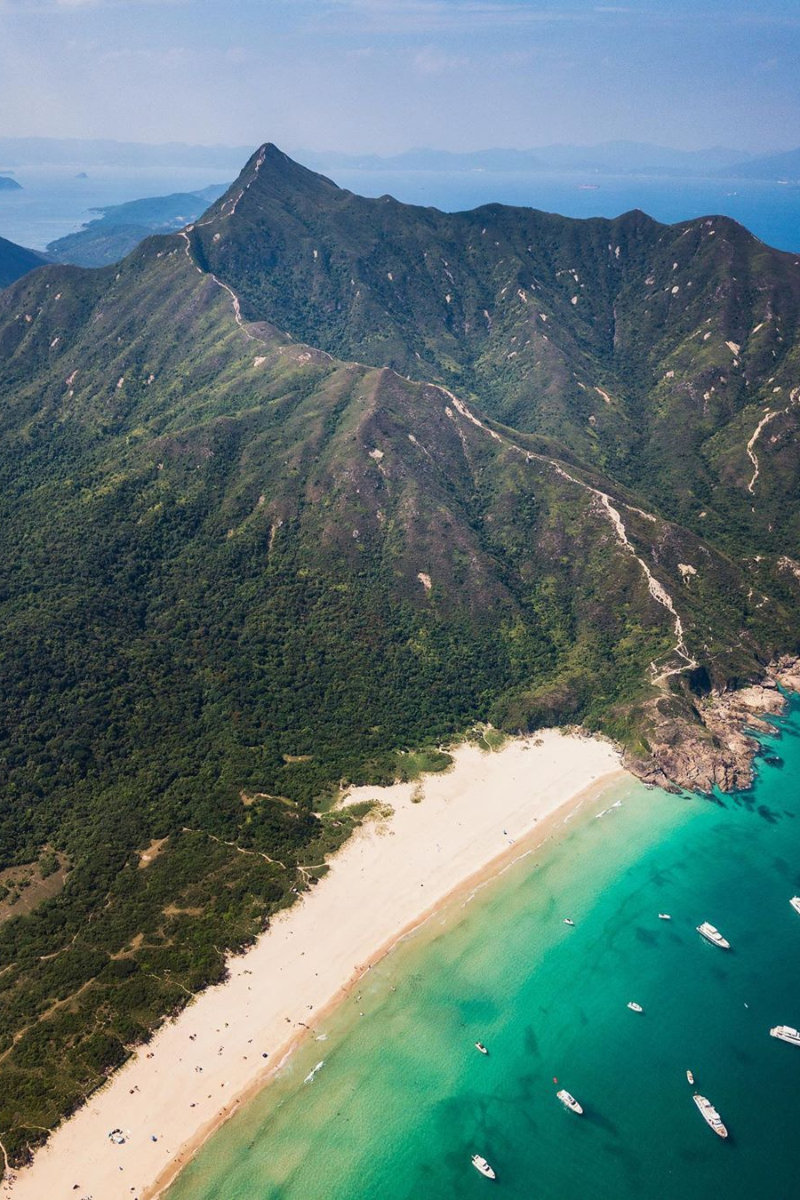
Photo source: Localliz 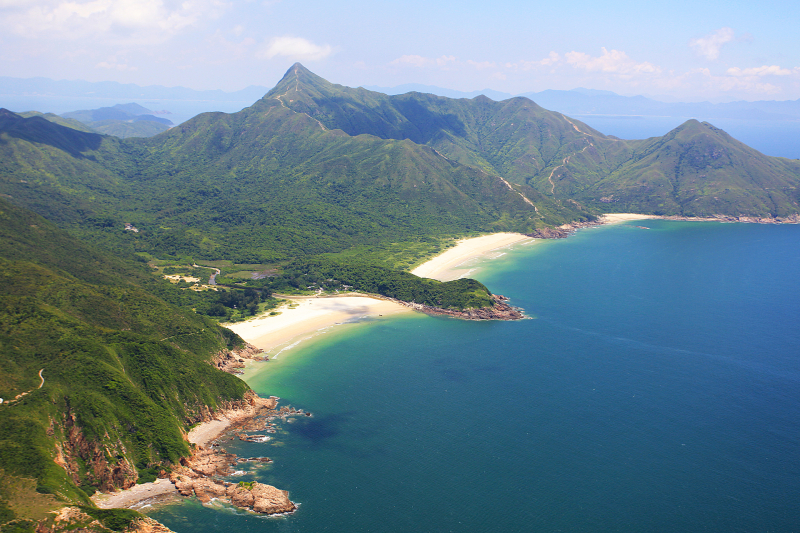
Photo source: Wikipedia -
Basalt Island is one of Port Shelter's top dive locations, including shallow and deep regions to explore. The sheltered harbor on the west side of the South point is the most popular spot for dove virtually all year.
Several massive "teeth"-like gorges carved into sheer cliff sides that plummet into the ocean. Diving begins at about 5 meters, where these walls meet the beach.
Huge rocks that have fallen from the walls throughout time serve as launching platforms for lionfish and scorpionfish on the hunt of Basalt Island. Boxing shrimp, blue-ringed octopus, and frogfish all live among the rocks.
The bottom is covered in anemones and their clown fish inhabitants at a depth of 6-8 meters. Angel fish, butterfly fish, and cowfish, as well as large cuttlefish, are frequently observed here. The gigantic black coral shrubs that offer home to many fish, cowrie slugs, and occasionally xeno crabs are definitely worth the trip to the deeper plateau about 15 meters.
Even on rough days, anchoring in the sheltered South-West Bay is extremely easy. On calm days, the northeast and southeast offer excellent diving.Location: part of Hong Kong Global Geopark
Depth: 8m
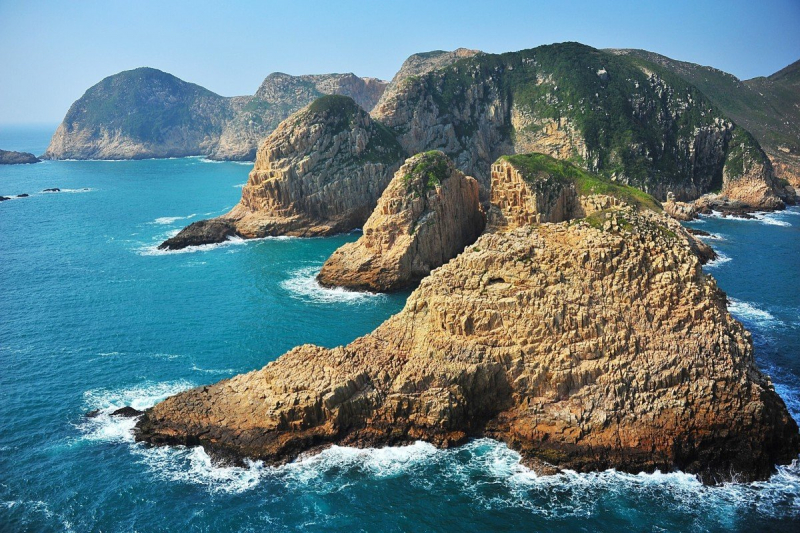
Photo source: South China Morning Post 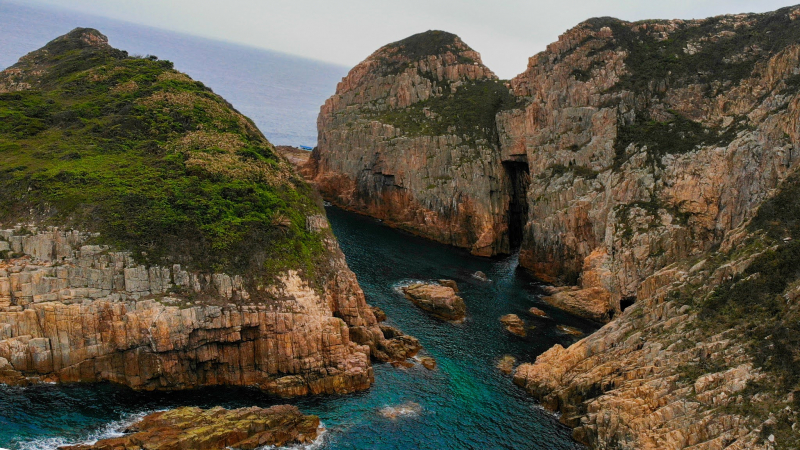
Photo source: Hong Kong Hikers -
One of the most best dive sites in Hongkong is the Eastern Dam of High Island Reservoir in Sai Kung Country Park. This large man-made wave barrier is nestled between cliff walls of hexagonal rock formations in the Sai Kung Geopark, providing an interesting topography for divers and snorkelers with its rich marine life.
Eastern Dam gives the image of a buried underwater city visited by large schools of damsels in distress and wispy sawtooth barracudas. The cement dolosses build caves, caverns, and bridges on top of each other and on the sandy seabed, providing home for shadow-loving species like squirrel fish, bigeyes, and sweepers.Hermit crabs and yellow-footed rock carbs can both be found here. Sting rays have been spotted hidden in the shadows, and some quite large octopuses hunt in the region. Cave divers with line equipment have the option of diving deep into the crevices between the cement boulders. Anchoring is possible anywhere along the walls, although the diving on the western side is the most diverse. Spring and summer are the best times to dive here, however it may be done all year on any calm day without swell.
Location: Sai Kung, Hongkong
Depth: 28m
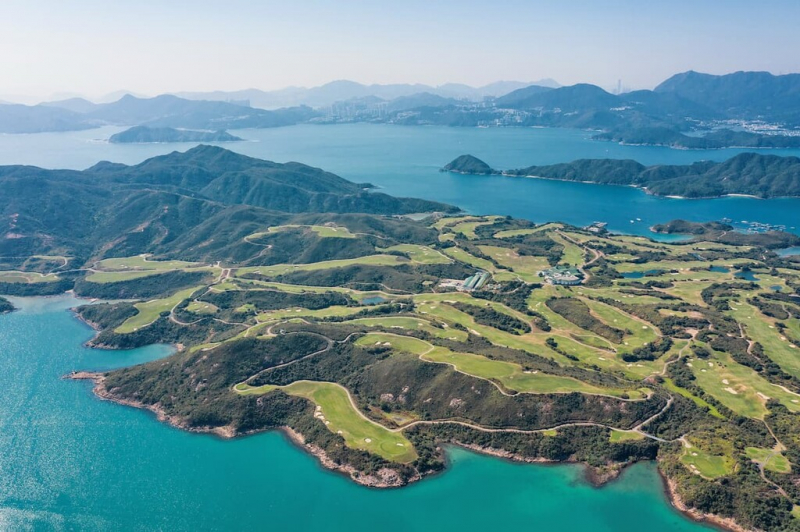
Photo source: Peakvisor 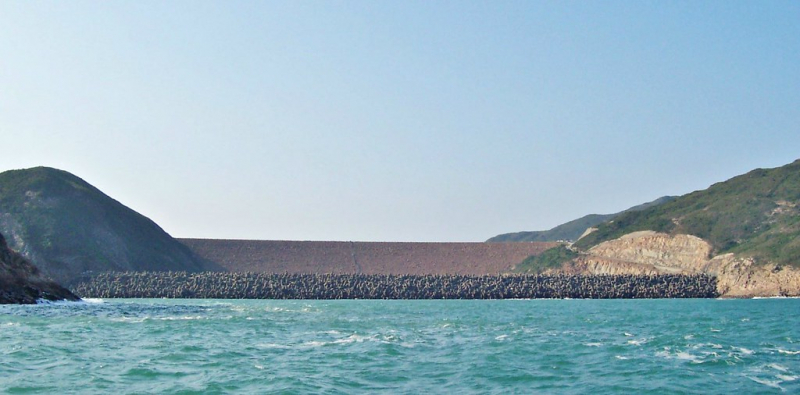
Photo source: Flickr -
Hoi Ha Wan Marine Park, one of the first to be developed in the 1990s, offers a wide range of diving opportunities. This is among the best dive sites in Hongkong and one of Hong Kong's best hard coral gardens can be seen along the shores of Double Bay.
Discarded fishing vessels were sunk here to provide reef habitat for corals and water-cleaning invertebrates like oysters and clams, as well as to provide an obstruction to the widespread bottom-trawling. Some of these wrecks, which are located at 15-16 meters, can be dived in shallow water. In Hoi Ha Wan, there are just two places where anchoring is permitted. The wrecks are best dived from a speedboat, which is anchored just outside the marine park.
The coral ecosystems of Hoi Ha Wan Marine Park are beautiful. This marine park is home to the majority of Hong Kong's stony coral species. In Hoi Ha Wan, more than 100 species of reef-associated fish have been discovered. Furthermore, the Park's ecological importance is demonstrated by records of a broad range of marine species, such as starfish and jellyfish.Local British Sub-Aqua Club diving enthusiasts 'Ydive' did a Reef Check through AFCD, and Li Po Chun United World College's Coral Monitoring Team has been annually monitoring coral and marine life variety and density since 1992.
Location: Hongkong, East Asia, Asia
Depth: 10m
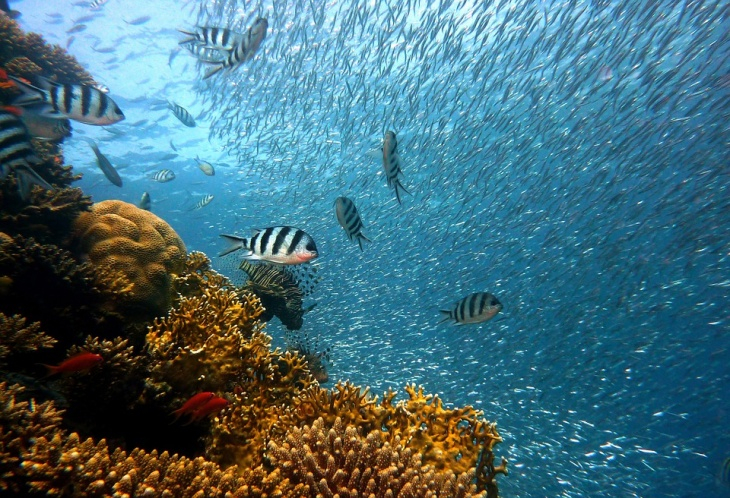
Photo source: TIkkikids 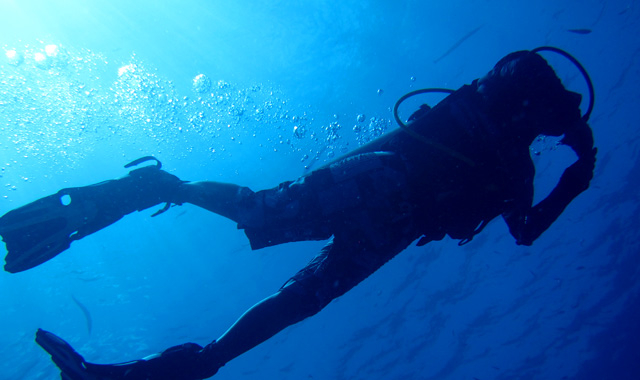
Photo source: Asia Blue Scuba -
Breaker Reef is another popular scuba diving spot in Hong Kong. It is an uninhabited island that has escaped commercialization. Breaker Reef, which is just waiting to be discovered, has ideal currents and winds for scuba diving, making the experience even more thrilling.
This region, also known as 'Shek Ngau Chau,' is surrounded by jagged rock formations. Breaker Reef, regarded as one of Hong Kong's top scuba diving spots, is home to an incredible variety of corals and sea life, including enormous animals like sharks. Paying a visit to this Reef will be worthwhile if one wishes to test their inner daredevils.
To get to this location, you'll need a large private boat. Hebe Haven (Pak Sha Wan) or Sai Kung are the closest convenient piers. It's critical to recognize that this area is quite vulnerable. Any easterly wind will churn up this area, making it difficult for vessels to navigate. This region is considered remote and is located near the Hong Kong-China border.
Location: in Mirs Bay to the southwest of Shek Ngau Cha
Depth: 18
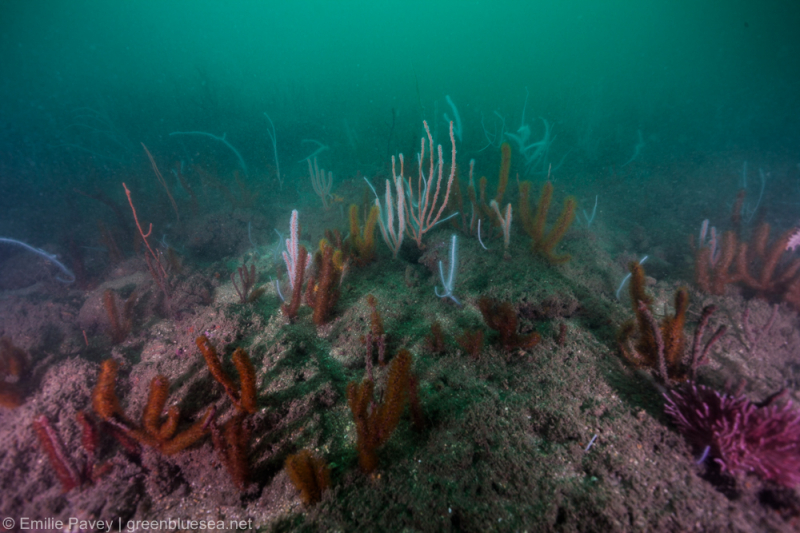
Photo osurce: Green Blue Sea 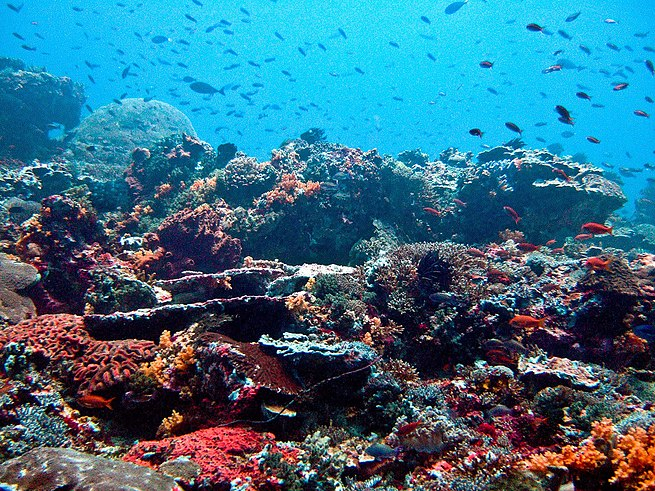
Photo source: Ask Different








